Brake Rotor Replacement Front
Removal Procedure
- Remove one-third of the brake fluid from the brake master cylinder reservoir.
- Raise and suitably support the vehicle. Refer to Lifting and Jacking the Vehicle in General Information.
- Remove the tire and the wheel. Refer to Tire and Wheel Removal and Installation in Tires and Wheels.
- Remove the caliper bracket bolts (1) and discard.
- Remove the caliper and bracket and secure with mechanic's wire.
- Remove the brake rotor set screw (1).
- Remove the brake rotor.
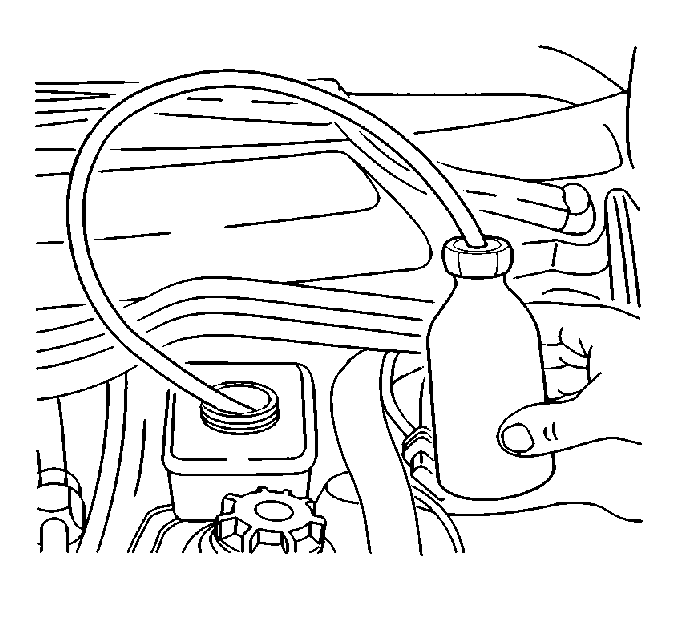
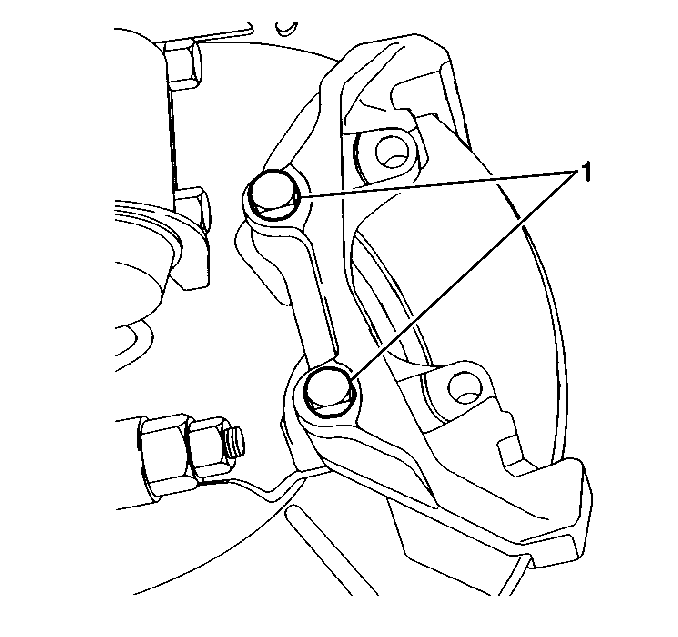
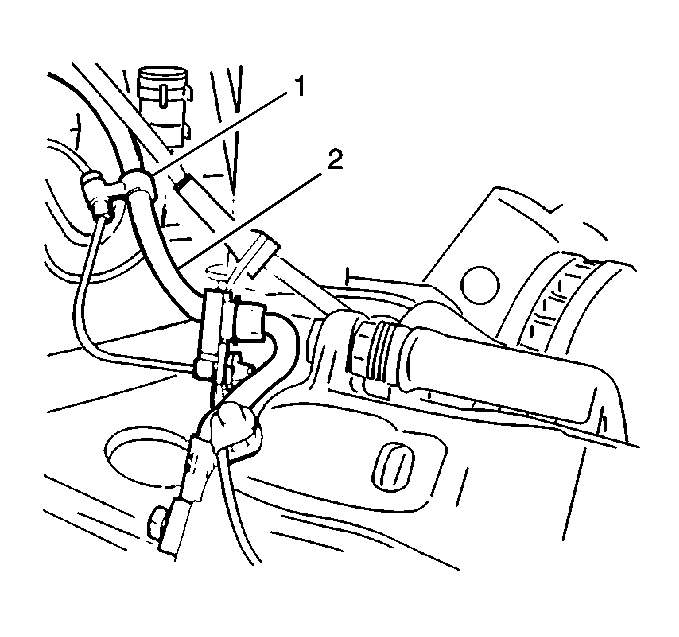
Important: Do not twist or crimp the brake hose (2) and/or the sensor wire.
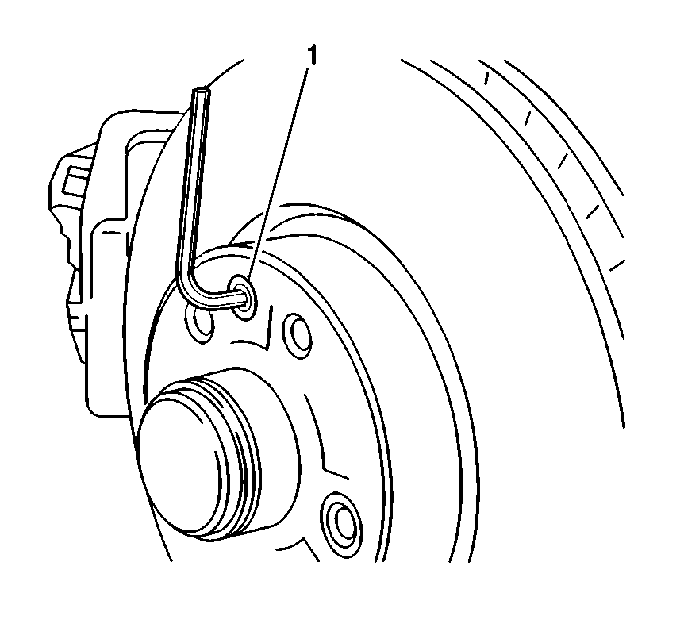
Installation Procedure
- Chase the caliper bracket mounting threads in the steering knuckle to remove any residual locking compound.
- Install the brake rotor.
- Install the brake rotor set screw (1).
- Install the caliper and bracket to the steering knuckle.
- Coat the new caliper bracket bolts (1) with 272 Threadlocker, GM P/N 12345493 or equivalent.
- Install the new caliper bracket bolts (1).
- Install the tire and wheel. Refer to Tire and Wheel Removal and Installation in Tires and wheel.
- Lower the vehicle.
- Fill the master cylinder reservoir.
- Make 20 stops from 48 km/h (30 mph) using medium to firm brake pedal pressure to burnish the brake rotors.
Notice: Whenever the rotor has been separated from the axle flange, clean any rust or foreign material from the mating surface of the axle flange and brake rotor. Failure to do this may result in increased lateral runout of the rotor and brake pulsation.


Tighten
Tighten the caliper bracket bolts (1) to 95 N·m (70 lb ft)
on the first pass and additional 37 degrees on the second pass.
Important: It is important that new braking surfaces be broken in or burnished after brake pads are installed and/or after rotors are refinished. Avoid overheating the brakes.
Brake Rotor Replacement Rear
Removal Procedure
- Remove one-third of the brake fluid from the brake master cylinder reservoir.
- Release the parking brake if applied.
- Raise and suitably support the vehicle. Refer to Lifting and Jacking the Vehicle in General Information.
- Remove the tire and wheel assembly. Refer to Tire and Wheel Removal and Installation in Tires and Wheels.
- Use a screwdriver to gently pry between the rotor and each brake pad to bottom the pistons in their bores.
- Remove the brake pipe retainer (2) from the brake pipe mounting bracket on the control arm about 2 feet up the brake pipe from the caliper.
- Remove the brake pipe from the slot in the bracket.
- Remove the caliper bolts (1).
- Remove the caliper from the rotor.
- Remove the rotor set screw (1).
- Remove the rotor.

Important: Use only minimal effort to manipulate the pistons. Ensure to use slow gradual force as the cylinders are so small.
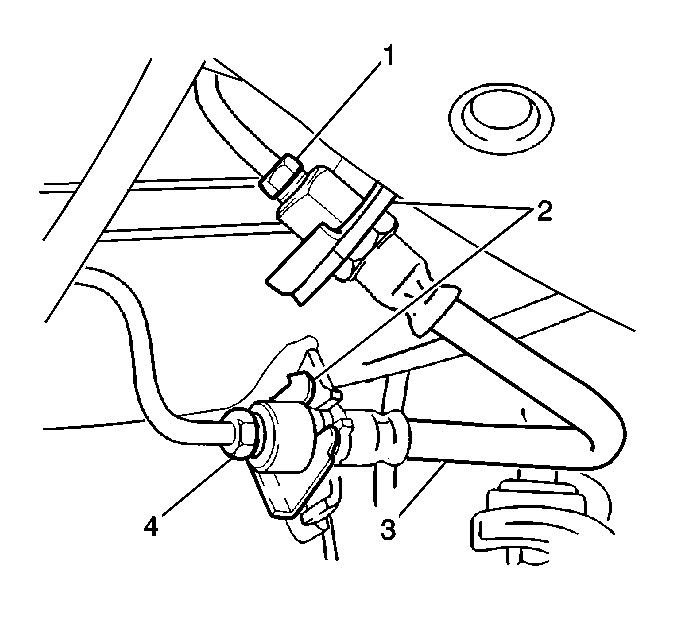
Important: Use only enough force as necessary to remove the brake pipe from the bracket. Ensure not to distort the pipe.
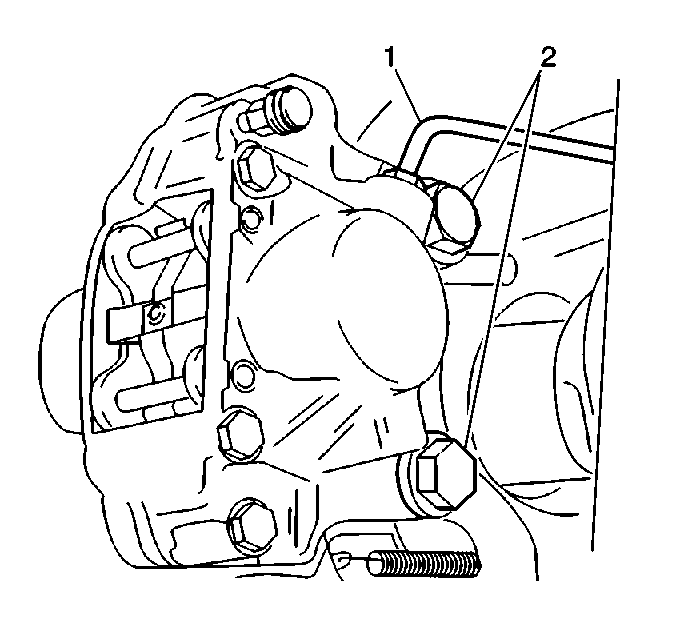
Important: Hang the caliper from the spring so the weight of the caliper does not bend the brake pipe.

Installation Procedure
- Install the rotor.
- Install the rotor set screw (1).
- Install the caliper to the rotor.
- Install the caliper bolts (1).
- Install the brake pipe into the slot in the bracket.
- Install the brake pipe retainer (2) onto the brake pipe at the bracket.
- Install the tire and wheel assembly. Refer to Tire and Wheel Removal and Installation in Tires and Wheels.
- Lower the vehicle.
- Fill the master cylinder reservoir.
- Make 20 stops from 48 km/h (30 mph) using medium to firm brake pedal pressure to burnish the brake rotors.
Notice: Whenever the rotor has been separated from the axle flange, clean any rust or foreign material from the mating surface of the axle flange and brake rotor. Failure to do this may result in increased lateral runout of the rotor and brake pulsation.


Notice: Use the correct fastener in the correct location. Replacement fasteners must be the correct part number for that application. Fasteners requiring replacement or fasteners requiring the use of thread locking compound or sealant are identified in the service procedure. Do not use paints, lubricants, or corrosion inhibitors on fasteners or fastener joint surfaces unless specified. These coatings affect fastener torque and joint clamping force and may damage the fastener. Use the correct tightening sequence and specifications when installing fasteners in order to avoid damage to parts and systems.
Tighten
Tighten the caliper bolts (1) to 80 N·m (59 lb ft).

Important: It is important that new braking surfaces be broken in or burnished after brake pads are installed and/or after rotors are refinished. Avoid overheating the brakes.
